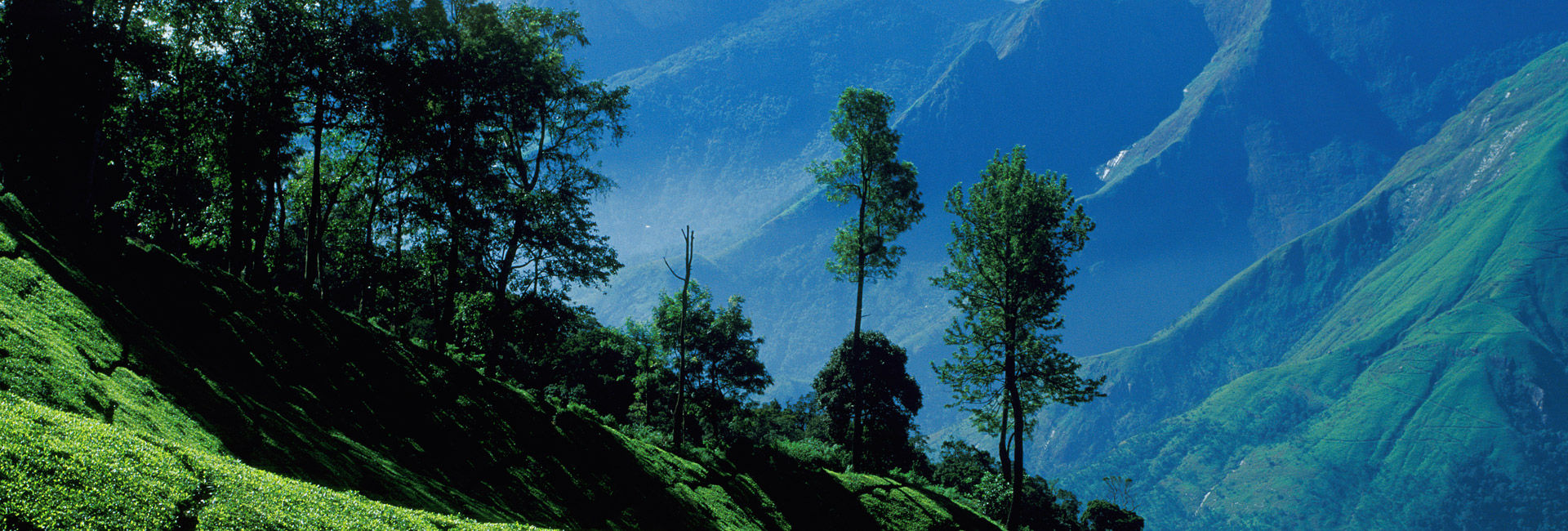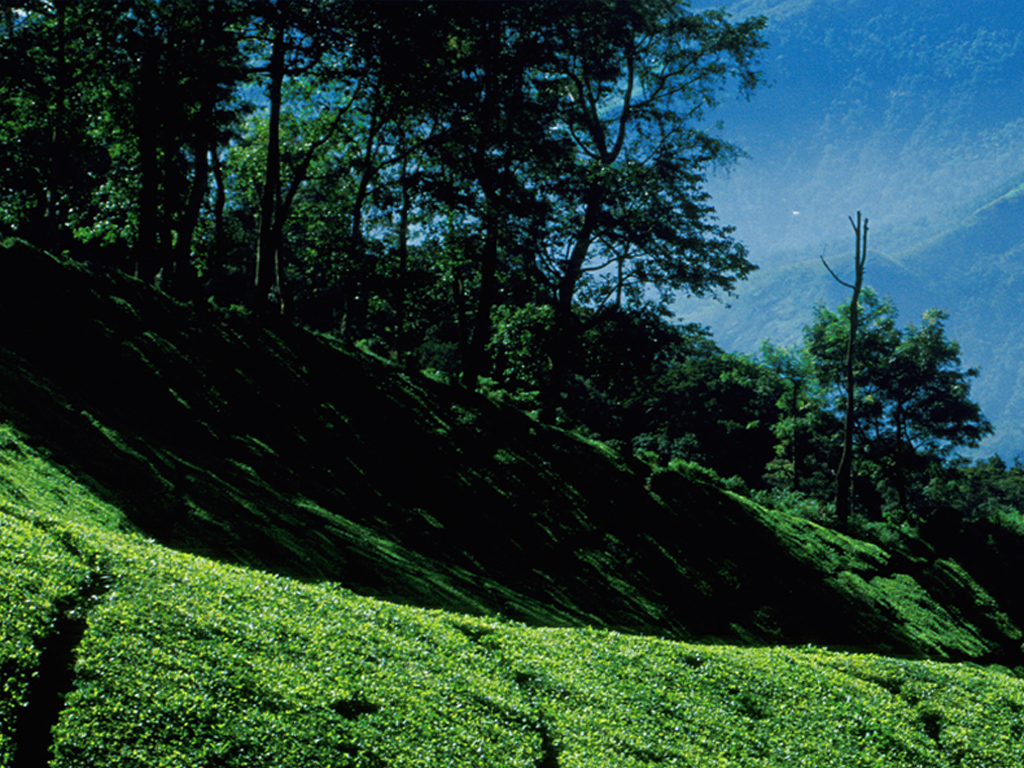History of Munnar
The early history of Munnar is not perfectly known today. The early inhabitants of the region are members of the Muthuvan tribal community. However, it remained a wild and unexplored landscape till the later half of 19th century when ambitious planters from as far as Europe started plantations here.
Plantation eraMunnar came to be known to the outside world in the 1870s with the visit of the British Resident of the then Travancore kingdom John Daniel Munro. Munro, who visited the place as part of settling the border dispute between Travancore and the nearby state of Madras literally fell for the beauty of the region. Though the Munnar region fell under the jurisdiction of the Travancore kingdom, it was the jenmam land of Poonjar royal family. Since it was a ‘jenmam land’ the royal family enjoyed absolute powers over the land as the landlord.
Munro had a great interest in plantation. Of the several hills in the region, he found the Kanan Devan hills with high potential for plantation crops. Without wasting any time Munro visited the Poonjar Palace and met the then head of the royal family, Rohini Thirunal Kerala Varma Valiya Raja, fondly called as Kela Varma Raja. The entrepreneur in Munro won the confidence of Kela Varma Raja and he agreed to lease out Kanan Devan hills to Munro for a handsome payment.
Thus in 1877, Poonjattil Koickal Rohini Thirunal Kerala Varma Valiya Raja leased out the Kanan Devan hills comprising about 1,36,600 acres of land to John Daniel Munro for an annual lease rent of Rs. 3,000 and a security deposit of Rs. 5,000.
Munro formed the North Travancore Land Planting & Agricultural Society in 1879. Members of the society started cultivation of crops, including coffee, cardamom, cinchona and sisal in various parts of the region. However these crops were later abandoned when tea was found to be the ideal crop for the region. A.W. Turnor was the first to start cultivation.
Interestingly, it was not Munro or Turnor who started tea cultivation in Munnar. The credit goes to A.H. Sharp, a European planter, in 1880. Sharp planted tea in around 50 acres of land at Parvathy, which is now part of the Seven Mallay estate. In 1895, Finlay Muir & Company (James Finlay and Company Limited) entered the scene and bought 33 independent estates. The Kannan Devan Hills Produce Company was formed in 1897 to manage these estates.
Planters get a setbackIn 1924, the plantations of Munnar suffered a major setback in the form a disastrous monsoon. Heavy landslides and flooding literally redrew the landscape in several places. There was a heavy loss of property and life. Though it was hard for them, the inhabitants managed to bring back life to a normal in a few months. Large-scale replanting was carried out in several estates.
Entry of TatasIn 1964, the Tata Group entered into collaboration with Finlay which resulted in the formation of the Tata-Finlay Group. Tata Tea Ltd. was formed in 1983. In 2005, the Kannan Devan Hills Produce Company Pvt. Ltd. was formed and Tata Tea transferred the ownership of its plantations to the new company. Employees of Tata Tea hold stake in the company.
Tourism, the new hope of MunnarIf plantation industry ‘discovered’ Munnar in the 19th century, it was re-discovered by the tourism industry in the later half of the 20th century. The hill station, situated about 1600 m above the sea level, began to be flocked by travellers from around the world. The town, which still retains its colonial charm, has a large number of hotels to greet travellers. Virgin forests, savannahs, rolling hills, scenic valleys, numerous streams, waterfalls, sprawling tea plantations and winding walkways are attracting thousands every year.
Poonjar Royal FamilyThe history of Munnar is never complete without a mention of the Poonjar royal family. Over a long period of history, this royal family had the privilege to be the custodians of the virgin hills of Munnar.
The history of Poonjar Royal Family begins in Tamil Nadu from where they had to flee following a ruthless struggle for power. Long ago, the Madurai kingdom was ruled by Manavikrama, a mighty king of the Pandyan dynasty. Besides a powerful kingdom, Madurai had the distinction of being a centre of arts. The Pandyan kings had great reverence to the goddess Madurai Meenakshi. The artful sanctum sanctorum of the temple is believed to have been built during the reign of the Pandyas.
Once Madurai came under the attack of the nearby Chola dynasty and after a fierce battle, the Pandyas recaptured their kingdom. The recapturing of Madurai was celebrated with spectacular festivities. But in the night, when everyone was asleep after the celebrations, Viswanatah Naicken a general of the Pandyas who had sided with the Cholas, opened the fort gates for the enemy.
The Chola army unleashed a ruthless attack slaying the sleeping soldiers. A minister safely took Manavikrama and his immediate family out of the fort through a long secret tunnel. The family had managed to take a good portion of their fortune in the form of jewellery, gems and gold. The tunnel led them to a forest area from where they reached Palghatusserry (the present day Palghat). There they lived for a brief period in the house of a Brahmin. But when he came to know that his guest was King Manavikrama, the Brahmin family feared the displeasure of the Cholas and asked them to leave the place.
From there, Manavikrama moved to Vanneri, which is part of the present day Thrissur. There he built a residence and after sometime some of his former subjects came to visit him. They were the poligars of Theni, Uthamapalayam and Kumbam. Though they extended support to their dear king to win back Madurai, Manavikrama had scant interest. Though the poligars returned, they didn’t loose hope in a come back of the King. They built a palace at Mele Goodalloor in anticipation of a change of mind of their dear king.
As time passed by Manavikrama was racked with a feeling of insecurity at Vanneri and during this time he was approached by the king of Elangallur (present day Edappally). Both the royal heads soon struck a chord of friendship which resulted in Elangallur king marrying the daughter of Manavikrama. The Elangallur king, as a token of his love, gifted the Ernakulam region in his principality to the queen.
Unfortunately, Manavikrama who found great solace in getting an affluent relative didn’t live for long. After Manavikrama’s death, his eldest son Kulasekhara took charge of family affairs. The prince was an ambitious gentleman who wanted to regain the glory of his family. He made arrangements to move to the Goodalloor palace and regroup the loyal Poligars.
Fate was more generous than the young prince had thought. He came to know that the kingdom of Poonjar was for sale following the death of its chieftain. Poonjar lay opposite to the Goodalloor hill ranges and it was quite natural for the prince to have interest in the region. With the help of the fortune his family had brought from Madurai, the prince bought the Poonjar region from its custodians, the royal family of Thekkumkoor. Besides selling the land, Aditya Varma, the Thekumkoor King, installed Kulasekhara as the king of Poonjar.
Kulasekhara was an ardent devotee of the goddess of Madurai Meenakshi temple and the first thing he did was to build a temple for the goddess on the banks of Meenachil river which flowed through Poonjar. A grand palace and fort was also built soon. It is said that the idol installed at the temple was the original idol of Madurai Meenakshi temple, which King Manavikrama had brought with him.
The Pandya kings were generous rulers and had high regard for their subjects. Though their original title was Perumal, they adopted the title Raja for male members and Thampuratty for female members.


 Location
Location